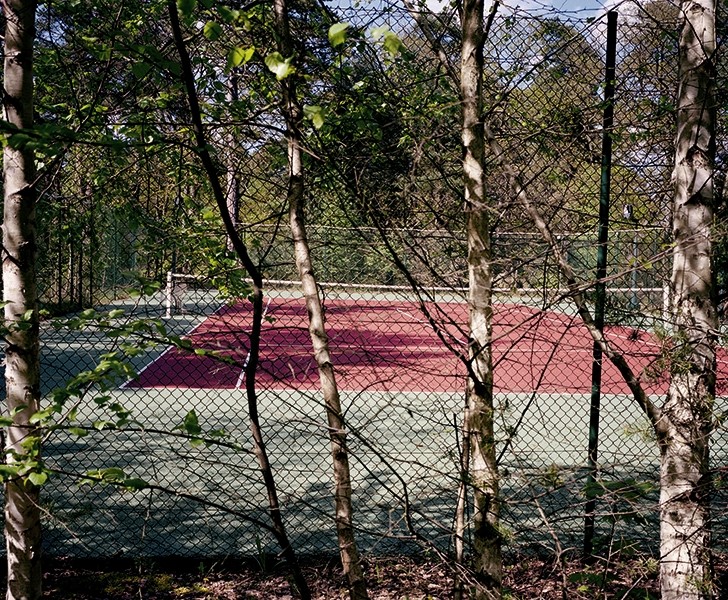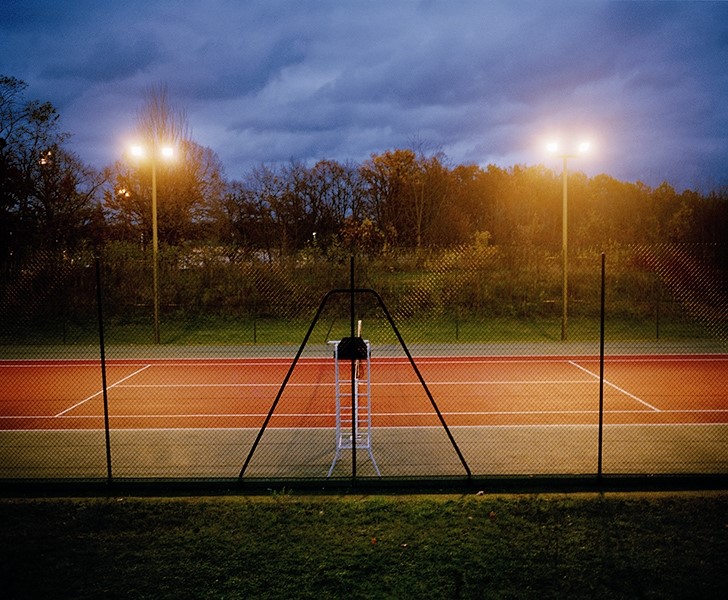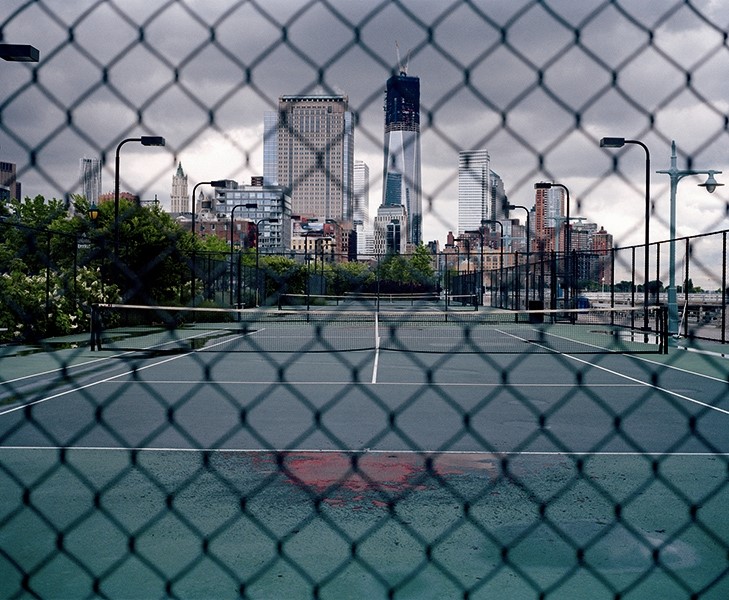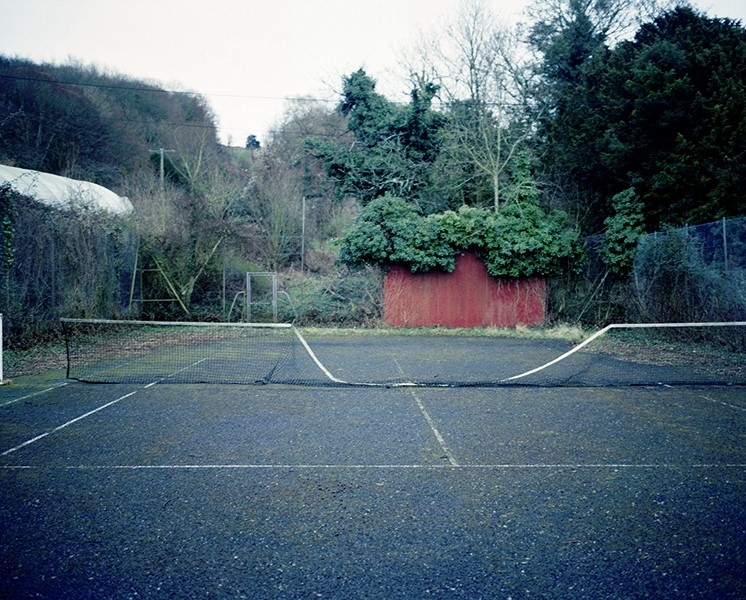We look at Giasco Bertoli’s new book, a collection of photographs of tennis courts.
Tennis is Giasco Bertoli’s passion. “There’s a kind of electric energy about it: two magnificent bodies facing each other, the regular sound of the ball hitting the racket… Polish playwright Witold Gombrowicz said tennis is youth multiplied by youth”. Yet the Swiss-Italian photographer snaps courts only once the lively excitement of a match has died down. His latest book is a compilation of vacant tennis courts photographed around the world in various states of abandon. Tidy and well-lit at dusk against a palm-tree backdrop in California. Completely concealed under the snow near Berlin. Forsaken, invaded by fallen leaves and growing trees in a London park. Some of them are slowly merging with the nature around them; all are filled with nostalgia, like silent witnesses of the traces of experience. “They all have one thing in common about them: the mark of time”.
"There’s a kind of electric energy about tennis: two magnificent bodies facing each other, the regular sound of the ball hitting the racket…"
Bertoli started taking pictures of courts in 1999 in southern Switzerland. “I was walking in the woods near where I grew up and I came across an abandoned tennis court. Its spirit was fascinating.” He then went on to photograph other courts in the area, and what started as a pastime gradually developed into a creative obsession. Nowadays the photographer travels the world in search of these magical spaces, empty yet heavy with emotions. “Over the years I’ve come to realize the evocative power of the sport”, says Bertoli, whose work is strongly influenced by filmic language. “Tennis-related elements are often present in movies as metaphors. The feline elegance of Guy Haines, the professional tennis player in Hitchcock’s Strangers on a Train. The love story between Dominique Sardà and Helmut Berger, dressed in pristine tennis attire as they clutch their rackets in Vittorio de Sica’s Il Giardino Dei Finzi-Contini. And of course the pantomime game played by a group of students in Blow Up… All of these scenes have shaped my own views.” Bertoli has even revisited Maryon Park, where Antonioni shot his legendary tennis scene, capturing the court as it is nowadays, not devoid of a certain neo-existentialist essence. “After all, these pictures are a reflection of our interior state.”
Tennis Courts II is on sale at No42 Paris, published by Nieves.
Text by Marta Represa
Marta Represa is a freelance writer specialising in fashion, art, photography and culture.




